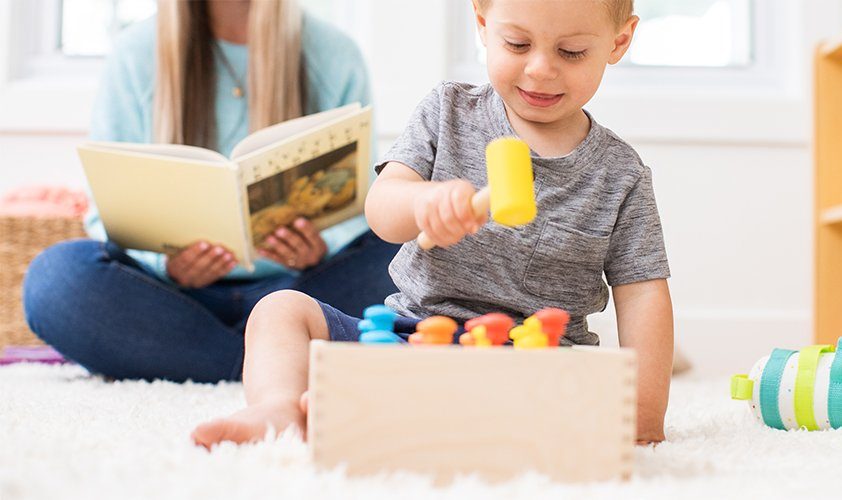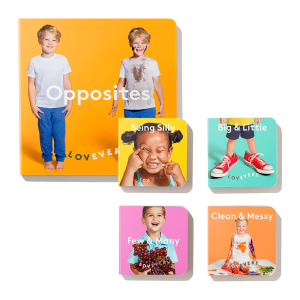How to pre-wire your child’s brain for reading

Has your child ever flipped a book that was upside down, remembered a favorite phrase, or called you out when you skipped a page? That’s because even as early as two, they’re starting to understand how books work. By 28 months, for example, your child might start to understand that you’re actually reading the words—not the pictures—on each page. Your child is likely exhibiting a wide range of pre-reading behaviors, which you can help develop.
Here are some strategies to nurture your budding reader by encouraging “print motivation”
In simple terms, print motivation is a child’s interest in and enjoyment of books and reading–it really boils down to the beginnings of intellectual curiosity. So many kids get to school and resist reading. It takes a lot of persistence to learn how to read, and cultivating print motivation helps them persevere.
Here’s how:
- Let them pick out their own books at the library—even if they’re the ones you hate reading, the level seems wrong, or you don’t think you will ever get through them all. If it’s a book, it counts.
- Read the same book over and over again. If you can handle reading their favorite book to them for the 200th time, research shows that repetitive reading increases enjoyment, pattern recognition, and confidence.

- Make sure there are always appealing books stored low to the ground so your child can reach them.
- Reading isn’t just for bedtime. Having books around the house, in your car, and your diaper bag helps show your child that reading is an anytime activity. You can read books at bathtime, in waiting rooms, and in transit. Right after a nap or in the morning when your child wakes up can be a good time to read because they might be more calm and receptive.

- If your child is squirming off your lap and doesn’t seem to have the attention span for reading, try mixing it up: give them a toy to fiddle with or read to them while they are playing on the floor. Research shows that they are still benefiting from being read to, even if it doesn’t seem like you have their full attention.
- Help your child notice the “environmental print” on street signs, food packages, billboards, clothing, and home addresses. Point these out and read them when you can.

Book Bundles for The Play Kits
Having the right books at the right time makes all the difference during your child’s early years. Enjoy even more stage-based books—featuring real stories and families—when you add our Book Bundles to your Play Kits Subscription.
Learn morePosted in: 25 - 27 Months, Language, Literacy, Books, Child Development
Keep reading

19 - 21 Months
22 - 24 Months
25 - 27 Months
DIY: mosaic texture art
Help your toddler explore what it feels and looks like to paint on different surfaces as they build fine motor and language skills.

19 - 21 Months
22 - 24 Months
25 - 27 Months
The best potty books for toddlers
Even before your toddler is ready to start using the potty, reading books about the experience can help them understand what the process is all about.

25 - 27 Months
28 - 30 Months
31 - 33 Months
34 - 36 Months
How to give your 2-year-old logical consequences
Your toddler is slowly learning that their actions have consequences. When you give and explain appropriate consequences, they’ll start to understand what they can and cannot do.

